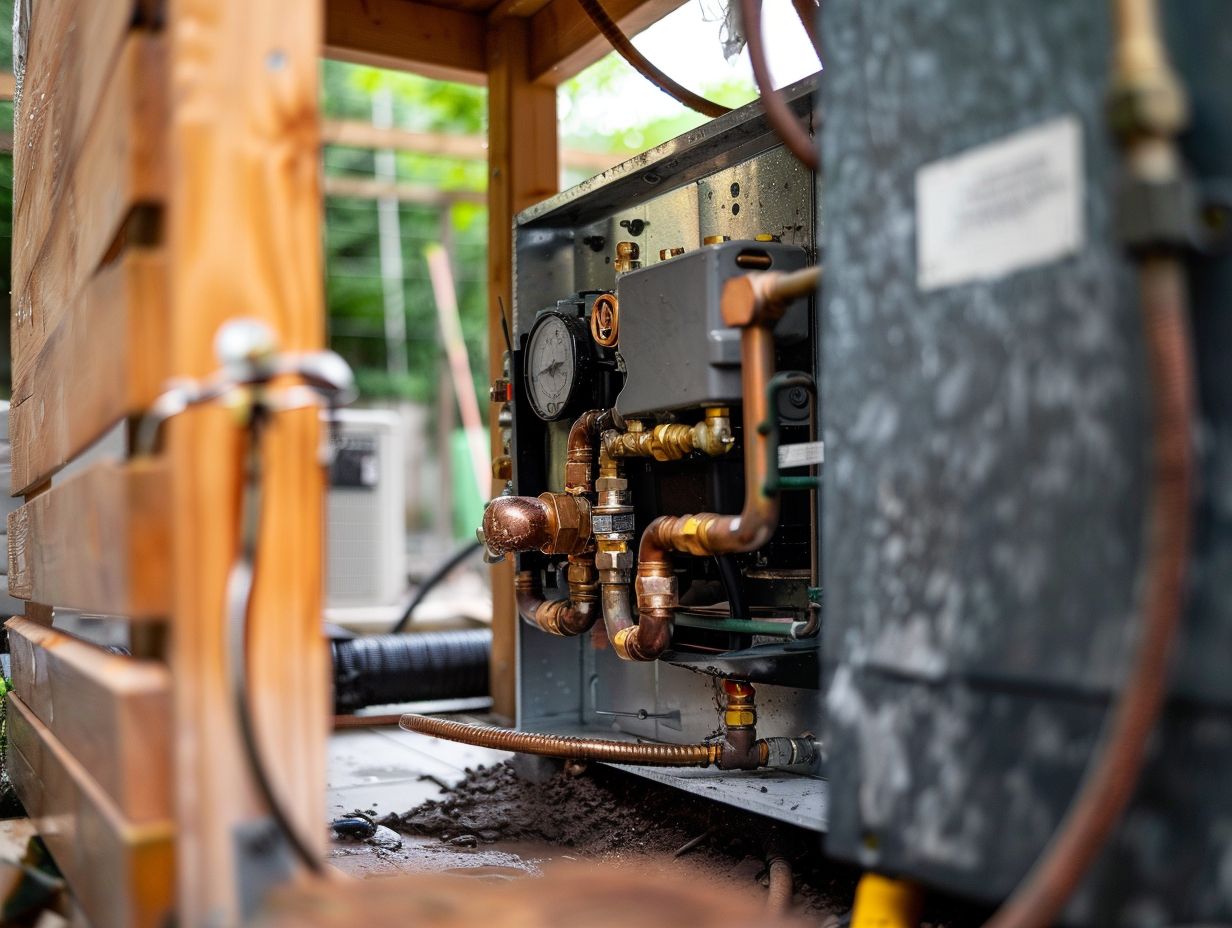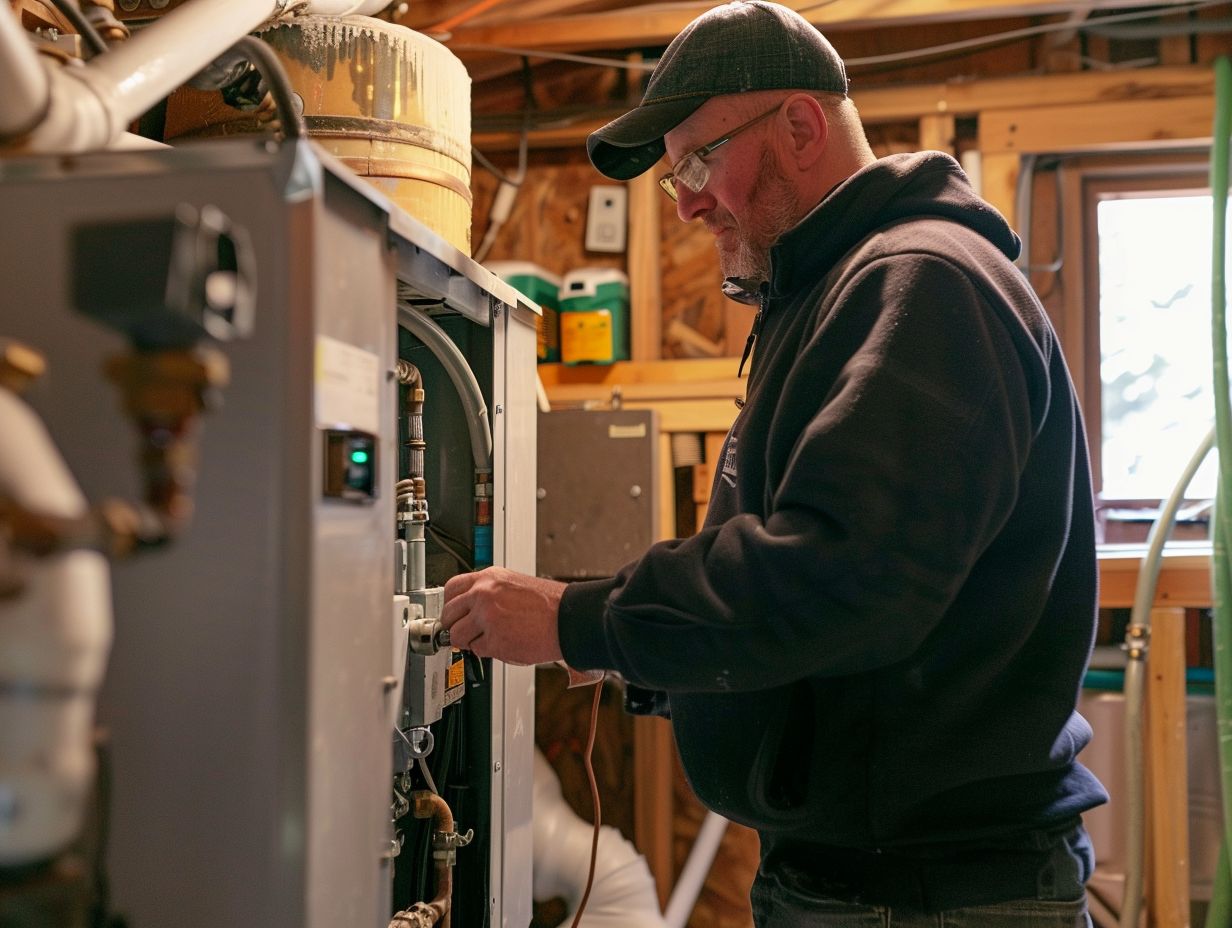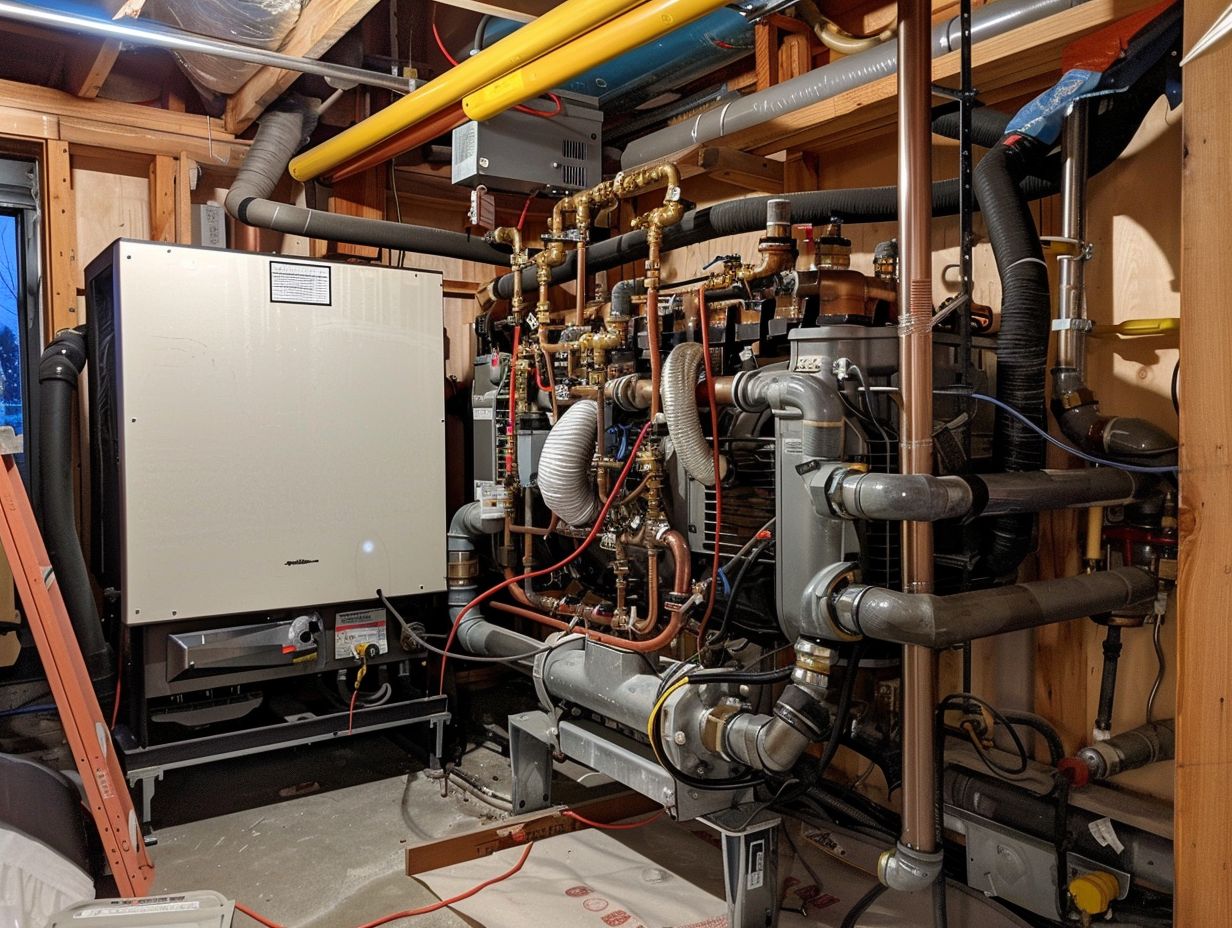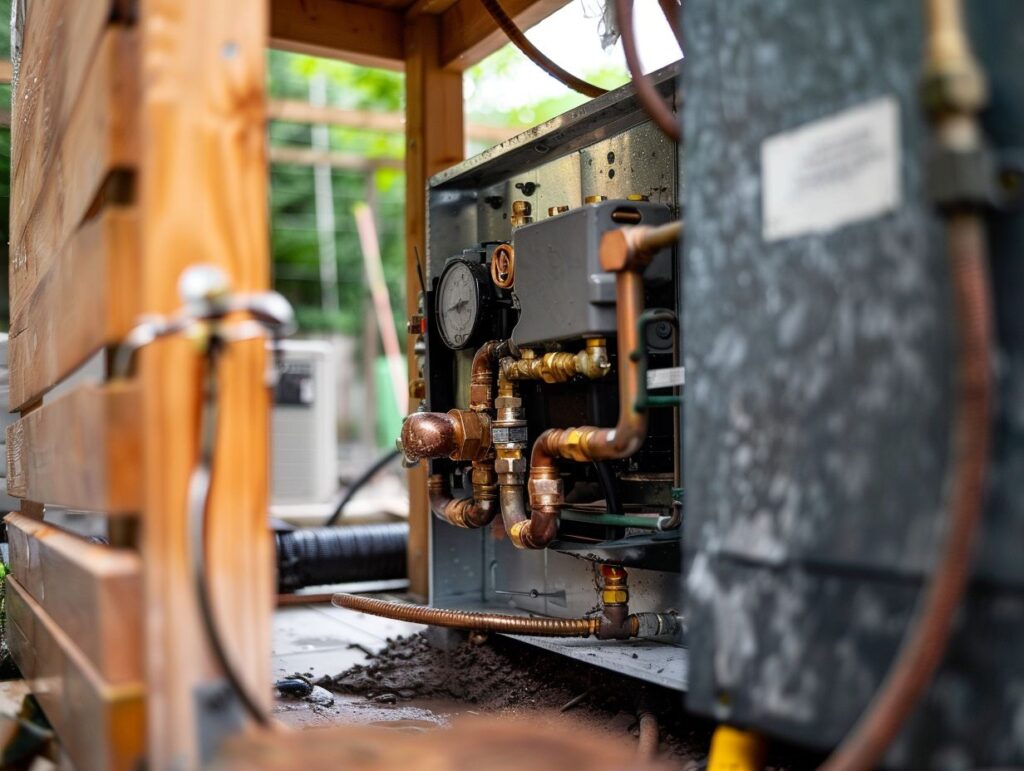If you are considering upgrading your heating system to improve energy efficiency and reduce costs, dual fuel heating systems may offer the solution you are seeking. This article will delve into the definition of dual fuel heating systems and the advantages of transitioning to this system.
Additionally, it will cover crucial factors to consider before retrofitting, the detailed retrofitting process, and the financial implications and savings linked to this enhancement. Real-life case studies of successful retrofitting projects will be presented to provide insights, and you will gain a deeper understanding of the potential benefits of dual fuel heating systems for your household.
Key Takeaways:

- Dual fuel heating systems can be retrofitted, providing cost savings and increased energy efficiency for homeowners.
- Before retrofitting, it is important to assess compatibility and understand the installation process.
- Retrofitting to a dual fuel system can involve a significant investment upfront, but can result in long-term savings and has proven successful in real-life examples.
Benefits of Retrofitting to Dual Fuel
When you convert to a dual fuel heating system, you are presented with numerous benefits as a homeowner. These benefits include improved energy efficiency, reduced running costs, and better control over heat demand.
By combining a heat pump with traditional gas or electric systems, you can optimise your central heating system to achieve maximum comfort and cost savings.
The flexibility provided by dual fuel systems allows you to select between different energy sources based on availability and cost-effectiveness. This flexibility helps you adapt to changes in fuel prices over time.
Additionally, integrating advanced controls and smart thermostats into your system enhances the management of heat demand. These tools enable precise temperature settings and scheduling, further improving efficiency.
Proper insulation is essential in reducing heat loss and ensuring the efficient operation of your dual fuel system. This step can lead to significant savings on your energy bills in the long term.
Cost savings and energy efficiency
Transitioning to a dual fuel heating system can result in significant cost savings and enhanced energy efficiency for property owners like you.
By carefully evaluating the installation of a heat pump, optimising insulation, and effectively managing operational costs, you can establish a more energy-efficient setting within the confines of your budget.
Dual fuel systems provide you with the flexibility to utilise both gas and electricity for heating your home, depending on the cost-effectiveness of each energy source at any given time. This adaptability give the power tos you to capitalise on fluctuations in energy prices and select the most economical option available.
By incorporating smart thermostats into dual fuel systems, you can achieve precise temperature regulation, further boosting energy optimisation. While there may be an initial investment associated with a dual fuel system, the long-term savings on utility expenses offset this cost, rendering it a sustainable and cost-effective solution for efficient heating.
Considerations Before Retrofitting

Before you embark on the retrofitting process to a dual fuel heating system, you must consider various factors. These include the compatibility of your existing systems, the need for qualified professionals like electricians and plumbers, and the feasibility of integrating new technologies like air source heat pumps or hybrid systems.
It is essential for you to ensure that your current heating system is compatible with the dual fuel setup. Professional expertise is crucial in evaluating the efficiency and safety of the installation, making it imperative to engage skilled electricians and plumbers proficient in handling such complex systems.
Incorporating innovative technologies, such as air source heat pumps or hybrid systems, requires a thorough understanding of the integration process. By involving knowledgeable professionals, you can optimise the performance of your dual fuel heating system and enhance energy efficiency in your home.
Assessing Compatibility and Installation Process
When assessing the compatibility of your existing heating systems and planning the installation process for a dual fuel heating system, it is crucial to consider the technological requirements, system configuration, and seamless integration of gas and electric components to achieve optimal heating outcomes.
This vital process ensures that your dual fuel system operates efficiently and effectively, maximising energy savings and overall performance. By evaluating the system configuration, you can identify potential areas for improvement and optimisation.
Strategic deployment of gas and electric components plays a significant role in balancing energy usage and cost-effectiveness. Proper technology integration allows for smooth coordination between the different heating sources, enhancing overall comfort and reducing environmental impact.
A well-thought-out compatibility assessment and installation plan are key steps towards a successful and sustainable dual fuel heating solution.
Retrofitting Process for Dual Fuel Systems
The retrofitting process for dual fuel systems involves a comprehensive approach that includes a system evaluation, selection of components, professional installations by qualified electricians and plumbers, and the integration of advanced heating technologies such as heat pumps to improve energy efficiency and heating performance.
During the system evaluation stage, it is crucial to assess the existing heating system to determine its compatibility with the dual fuel setup.
Following the evaluation, careful consideration should be given to selecting the appropriate components, such as dual-fuel thermostats and controllers, to ensure smooth integration.
Certified electricians and plumbers are essential for the installation process, ensuring the correct setup of the dual fuel system in compliance with safety standards. Utilising advanced heating technologies, like variable-speed compressors in heat pumps, is key to optimising energy usage and delivering consistent heating throughout the space.
Step-by-Step Guide
- When retrofitting to dual fuel heating systems, you should follow a step-by-step approach. Start by conducting a comprehensive evaluation of energy costs to understand the financial implications involved.
- Consider factors such as initial investment, maintenance costs, and potential long-term savings.
- Next, focus on assessing energy efficiency requirements to identify the most effective strategies for reducing energy consumption and lowering utility bills.
- Conduct a detailed analysis of heat demand to accurately determine the heating needs of the space, taking into account factors such as insulation, area size, and regional climate conditions.
- During the planning phase, carefully consider the installation process by determining the optimal placement and configuration of heating units to maximise effectiveness.
- Finally, integrate advanced heating technologies such as smart thermostats and energy-efficient boilers to enhance the performance and energy savings of the dual fuel system.
Costs and Savings of Retrofitting
Understanding the costs and potential savings associated with retrofitting to dual fuel systems is essential for homeowners seeking efficient and cost-effective heating solutions.
When considering factors such as running costs, energy efficiency enhancements, heat demand management, insulation improvements, and available financial support, you as a property owner can make informed decisions.
Managing a budget for retrofitting to dual fuel systems involves analysing the initial installation costs compared to the long-term savings on energy bills. Along with financial considerations, you can explore insulation upgrades to further enhance energy efficiency and reduce heat loss.
By optimising the running costs through proper maintenance and smart energy management, you can minimise the overall operational expenses. Additionally, it is worth exploring potential financial support options from government incentives or energy-efficient financing programs to offset some of the upfront investment.
Investment and Long-Term Savings

Investing in dual fuel heating systems involves incurring initial costs for system setup and installations. However, the long-term savings stemming from enhanced energy efficiency, optimised heat demand management, improved insulation, and reduced running costs can lead to substantial financial advantages for property owners over time.
These systems are specifically engineered to switch between different fuel sources based on efficiency and cost considerations. This ensures that the energy demand is met in the most cost-effective manner possible.
By integrating a dual fuel setup, homeowners are able to capitalise on fluctuating energy prices and availability, granting them the flexibility to manage heating expenses effectively.
Additionally, the installation of dual fuel systems may qualify for government grants or rebates, making them a practical choice for individuals seeking to upgrade their heating systems while staying mindful of budgetary constraints.
Case Studies of Successful Retrofitting
Exploring case studies of successful retrofitting projects to dual fuel heating systems can provide you with valuable insights into the real-life benefits, drawbacks, and outcomes experienced by property owners. By analysing specific scenarios, you can gain a better understanding of the implications and considerations associated with such heating system upgrades.
For example, in a recent retrofitting endeavour in a residential community, the implementation of a dual fuel heating system resulted in a significant decrease in monthly energy costs for the homeowners. Along with cost savings, the energy efficiency improvements were noteworthy, leading to a reduced carbon footprint.
Through the incorporation of heat demand management strategies, such as zoning and programmable thermostats, the overall comfort level within the properties was enhanced. Additionally, insulation enhancements played a crucial role in maintaining consistent indoor temperatures and reducing heat loss during colder months.
Real-Life Examples and Results
Examining real-life examples and outcomes of dual fuel heating system retrofits can provide you with practical insights into the actual expenses, energy conservation, adjustments in heat demand, enhancements in insulation, and overall advantages and disadvantages that property owners encounter after installation, giving you a comprehensive understanding of the results.
For example, in a residential retrofitting project conducted in a cold climate area, the introduction of a dual fuel heating system led to substantial reductions in expenses on utility bills during the winter season.
By seamlessly transitioning between a conventional fuel source and a more eco-friendly alternative, the property not only diminished its carbon emissions but also effectively met varying heat requirements.
The insulation improvements implemented during the retrofitting initiative played a pivotal role in preserving a steady indoor temperature, optimising energy efficiency, and ensuring maximum comfort for the occupants.
Frequently Asked Questions
Can Dual Fuel Heating Systems Be Retrofit?
Yes, dual fuel heating systems can be retrofitted into existing heating systems. This allows for increased energy efficiency and cost savings.
What are the benefits of retrofitting to a dual fuel heating system?
There are several benefits to retrofitting to a dual fuel heating system, including improved energy efficiency and cost savings, increased reliability, and reduced environmental impact.
Is it expensive to retrofit to a dual fuel heating system?
The cost of retrofitting to a dual fuel heating system can vary depending on the specific system and installation requirements. However, the long-term cost savings from increased energy efficiency can often outweigh the initial investment.
Can any heating system be retrofitted to a dual fuel system?
In most cases, yes. However, it is best to consult with a professional heating and cooling contractor to determine if your current system is compatible with a dual fuel retrofit.
How does the dual fuel system switch between gas and electric energy sources?
The dual fuel system is equipped with a thermostat that monitors outside temperature and energy costs. When the temperature drops below a certain threshold, the system automatically switches to gas for more efficient heating. Once the temperature rises above the threshold, the system switches back to electric heating.

